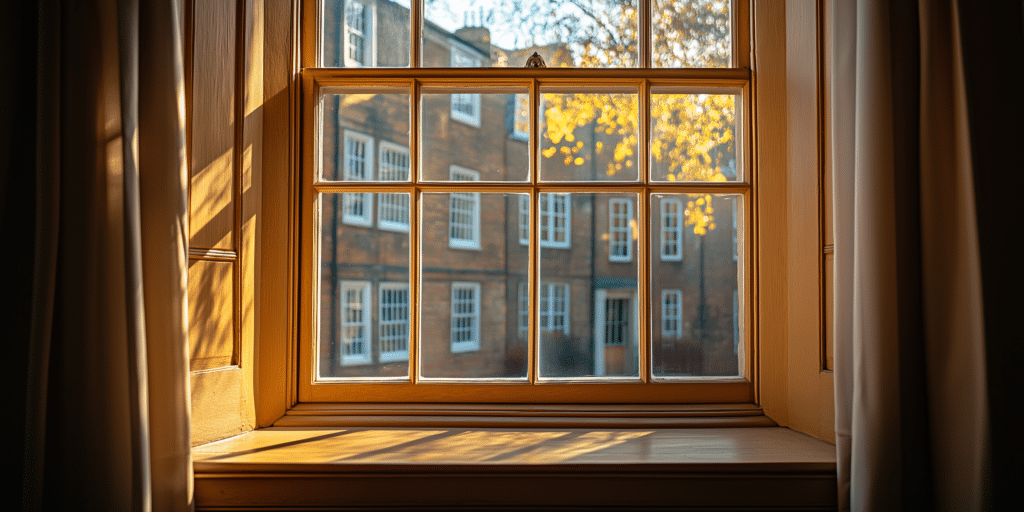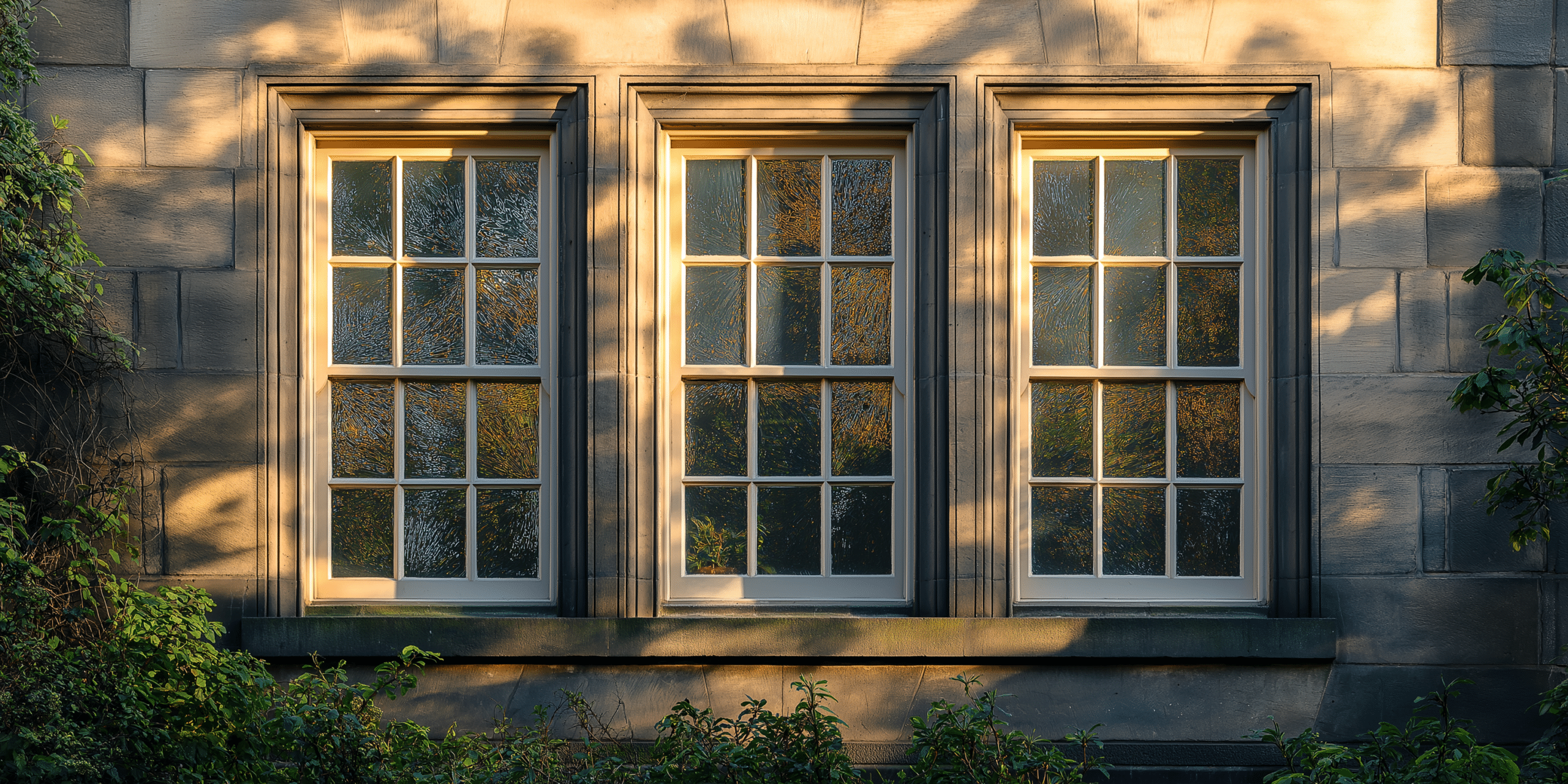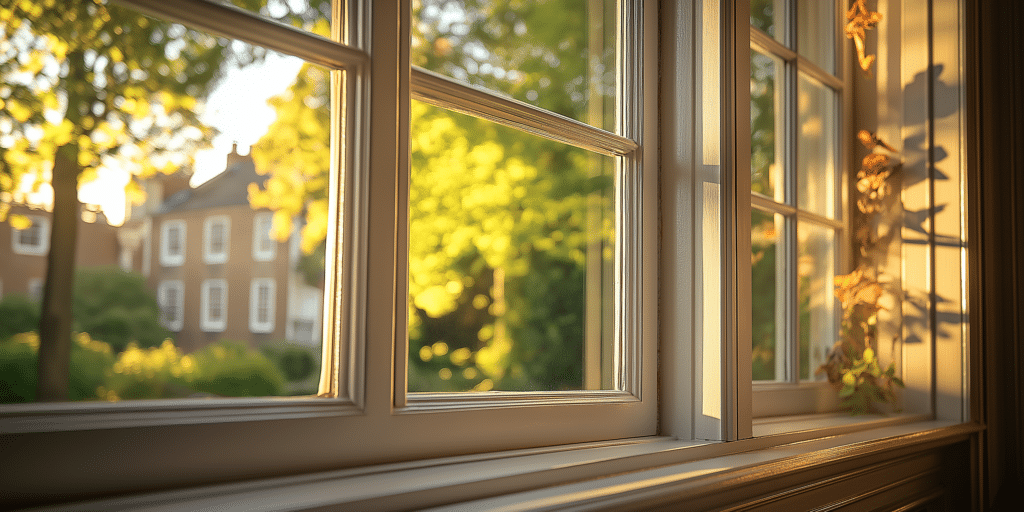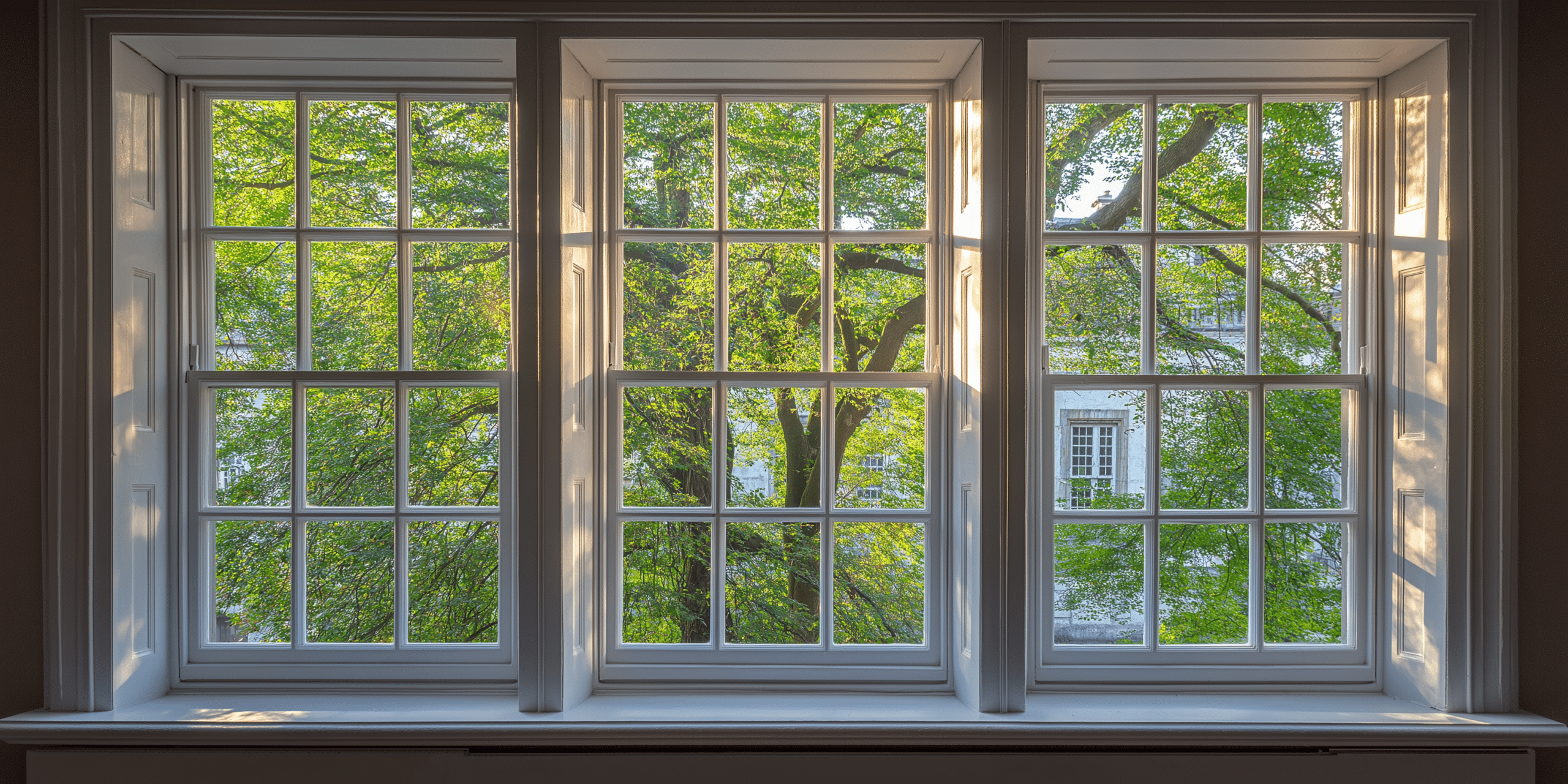What is a Sash Window Stop Bead, and Why is it Important?

A sash window stop bead is a slim strip, typically of wood or vinyl, positioned along the sash window frame’s inner edge. It works to secure the window, improve airtightness, and create a reliable seal. Why is this such a valuable addition to sash windows? There are multiple reasons, and each addresses both function and aesthetics:
- Enhanced Stability and Security: The stop bead reinforces the sash window, reducing window movement. This reinforcement is particularly beneficial for older properties with settled frames. A securely fitted stop bead prevents rattling and serves as a secondary security measure, restricting top sash movement to prevent unauthorised access.
- Improved Energy Efficiency and Insulation: Properly fitted stop beads create a tighter seal that helps to insulate the room, blocking cold draughts. Heritage specialist James Barron notes, “In homes with sash windows, stop beads can significantly improve energy efficiency by minimising heat loss and reducing energy bills.
- Weatherproofing and Moisture Resistance: The stop bead is a barrier against moisture, protecting the sash and frame from rot and dampness. Restoration experts recommend applying weatherproofing treatments to extend the bead’s life, particularly in coastal or high-humidity areas.
- Preserving Historic Aesthetics: For period homes, a sash window stop bead retains original features while meeting modern standards. “A well-fitted sash window stop bead maintains the historical integrity of your windows while enhancing durability,” explains James Longman, an expert in period window restoration.
Tools and Materials Needed for Sash Stop Bead Installation
For a successful installation, you’ll need to gather the right tools and materials to ensure both accuracy and ease of fitting. Here’s a comprehensive list:
- Measuring Tape: Essential for accurate sizing, particularly on custom or heritage sash windows, where standard measurements may vary.
- Hand Saw or Mitre Saw: A sharp saw can cut the bead precisely. Consider a mitre saw for intricate cuts, especially if your windows feature decorative moulding.
- Wood Chisel and Mallet: These tools are useful for trimming or adjusting the bead for a snug fit within the frame, ensuring no gaps that could compromise the airtight seal.
- Drill and Screws or Nails: Depending on your frame, secure the stop bead using either screws or nails, which provide long-term stability. For hardwood frames, consider screws for a more secure hold.
- Weatherproof Sealant: Critical for moisture resistance, especially in damp or coastal climates, where sealant helps prevent rot and air infiltration, as noted by Reddiseals.
- Choosing Your Stop Bead Material: Selecting the right material is essential. Wooden stop beads offer a traditional look suitable for period properties, while vinyl beads are favoured for their durability and low maintenance. Wood offers historical accuracy, but vinyl provides a longer-lasting, low-maintenance option.
Step-by-Step Guide to Fitting a Sash Window Stop Bead

Now that you’ve equipped yourself with the tools and materials, how should you install the sash window stop bead? Here’s a step-by-step breakdown to help you achieve a professional finish.
- Preparing the Frame: Begin by thoroughly cleaning the window frame area where the stop bead will sit. Remove any existing paint, dust, or residue which can hinder adhesion. Proper adhesion ensures a weatherproof seal and avoids issues with stability or moisture infiltration over time.
- Measuring and Cutting the Stop Bead: Measure the area accurately, marking precise measurements to avoid a loose fit. “Adjustments are often needed for older frames that may have shifted,” advises carpenter Tim Howells, underscoring the need for precise cuts to maintain fit and functionality.
- Securing the Stop Bead: Position the stop bead along the inner edge of the sash frame, aligning it perfectly. Secure with nails or screws. Pre-drilling can prevent splitting, particularly in harder woods, and improves durability.
- Sealing for Weatherproofing: Apply a high-quality sealant around the edges to prevent air and moisture ingress. Sealing minimises the risk of rot and damp, ensuring longevity and reducing future maintenance needs.
Maintenance Tips for Long-Lasting Stop Beads
Regular maintenance is key to prolonging the life of your sash window stop bead. Here are some helpful tips for maintaining optimal functionality:
- Biannual Inspection: Examine the stop bead at least twice a year for any signs of wear, gaps, or looseness. This is especially important after winter, when moisture or frost may have affected the wood or sealant.
- Re-sealing: Apply a fresh layer of weatherproof sealant annually or as needed. “In high-humidity areas, annual sealing prevents damage from moisture,” notes James Barron, a sash window specialist, who stresses the importance of preventing wood swelling or shrinking.
- Cleaning and Dusting: Regular cleaning prevents dirt build-up, which can degrade the seal over time. A soft cloth and mild detergent help maintain the bead’s condition, especially in areas with high pollen or dust levels.
- Paint or Varnish Touch-Ups: To keep wooden stop beads looking fresh, touch up paint or varnish as needed. “Touching up paint every few years prevents cracking and peeling, maintaining aesthetics and durability,” says Graham Parker, a seasoned joiner.
Conclusion: Why Invest in a Quality Sash Window Stop Bead?

This small addition enhances window performance, improves home energy efficiency, and preserves the historical charm of sash windows. Many homeowners report noticeable reductions in heating costs thanks to the improved insulation provided by stop beads.
Whether you’re restoring an Edwardian townhouse or looking to improve energy efficiency in a Georgian property, a well-installed sash window stop bead is an essential feature that offers both functional and aesthetic advantages. Stop beads work seamlessly with other sash window upgrades like draught-proofing and reglazing, providing a solid foundation for comprehensive energy efficiency improvements.




